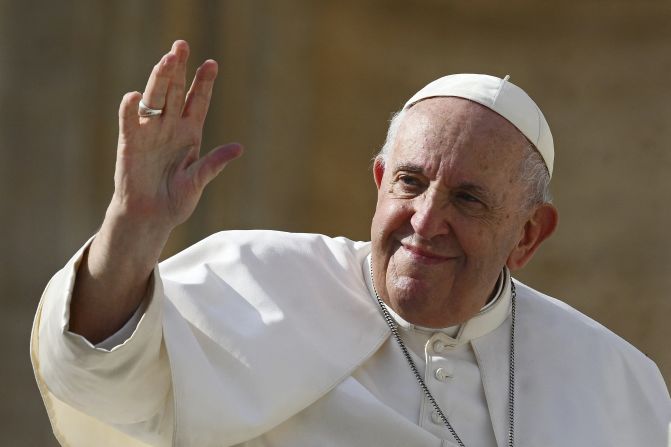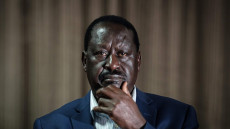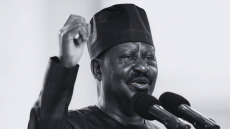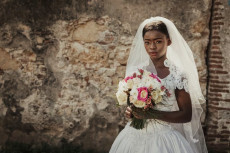- After the confirmation and announcement of the death, the Camerlengo locks and seals the Pope's apartment. This is usually done to prevent looting by the staff. The Camerlengo then destroys the Pope's fisherman ring and seal.
The death of Pope Francis on Monday, April 21, 2025, calls for a series of events from a period of mourning to a period of succession.
According to a recent history, the Vatican has a complex set of rules that govern the papal transition. The late Pope Francis was selected through the same process in 2013 after Pope Benedict XIV resigned from the post several weeks after being elected due to personal reasons that he termed old age and waning health.
The previous pontiff, Pope John Paul II, was the most recent Pope to die in office in 2005. He died at age 84 after serving the Papacy for 26 years.
Below is an outline of what happened after the death of Pope John Paul II:
1. Confirmation of death
The Pope's death is supposed to be confirmed and immediately communicated to relevant parties. This is according to Father Thomas Reese, the former editor-in-chief of America, who explained this to NPR in 2005.
The prefect of the papal household takes the initiative of telling the Camerlengo, who then verifies the Pope's death in the presence of the papal master of ceremonies. Next, the cleric prelates of the Apostolic Camera and the secretary of the Apostolic Camera draw up a death certificate.
Thereafter, the Camerlengo and the prefect of the papal household pass on the news to various officials in the Vatican. The officials can then relay the news to Romans and heads of nations.
Therefore, since this is the formal procedure for confirming the death of a pope, most times, ordinary people will hear of the Pope's death from the media. For instance, John Paul II died at 9:37 p.m. on April 2, 2005. The Vatican Press office informed journalists of his death through an email about 20 minutes later.
2. The papal apartments are locked
After the confirmation and announcement of the death, the Camerlengo locks and seals the Pope's apartment. This is usually done to prevent looting by the staff. The Camerlengo then destroys the Pope's fisherman ring and seal. This was traditionally done using a hammer to symbolize the end of a reign and block any misuse of the ring and seal, like forgery. This was at the end of a nine-day mourning period and before the commencement of the conclave.
3. A mourning period of nine days
Normally, the mourning period of a pope lasts for nine days (novemdiales). The cardinals are responsible for arranging the funeral rites to be observed during this period. During this period, the body of the Pope was laid first in the Apostolic Palace for the staff to view, and then moved to St. Peter's Basilica for public viewing. This happens for several days before the funeral.
According to Reese, the date of the funeral and burial is usually determined by the College of Cardinals, but the Apostolic Constitution states that the funeral should take place between the fourth and sixth day after death unless for special reasons.
4. Burial occurs within four to five days
The Camerlengo then arranges the funeral according to the instructions the Pope might have left behind. For instance, John Paul II's funeral took place six days after his death. It occurred in Saint Peter's Square at 0:00 a.m. local time on April 8.
The Dean of the Sacred College of Cardinals, Cardinal Joseph Ratzinger, conducted the three-hour ceremony with the assistance of 164 cardinals. Numerous people watched the event online, and many dignitaries attended physically, including four kings, five queens, and about 70 presidents and prime ministers.
Thereafter, John Paul II was buried immediately afterward in the crypt of St. Peter's Basilica in the Vatican. In his memoir, the Pope indicated that he had a different final resting place in mind. "When it happens, I will not be buried in Saint Peter's but at Santa Maria Maggiore," he wrote, referring to one of the four Papal Basilicas in Rome. "The Vatican is the home of my last service, not my eternal home."
5. The conclave chooses the next Pope
Camerlengo takes over as the acting head of the Vatican until the next Pope is chosen. He organizes the conclave, which is the election process.
Only cardinals under 80 years of age are allowed to vote for the next Pope during the conclave. In 2005, 115 of them voted. The process takes several days because it involves multiple rounds of voting.
The conclave usually starts 15-20 days after the Pope's death. The process is generally initiated by the College of Cardinals, who are responsible for setting the dates and times.
History records that all conclaves since the 1900s have lasted four or fewer days. Nevertheless, in 1831, the conclave lasted 54 days, more than five days.
The election process is completely secretive. It takes place in the Sistine Chapel. The public is only allowed to watch the chimney for hints. Black smoke from the chimney means that the cardinals will have to vote again, while white smoke means a new pope has been chosen.
For instance, the conclave of 2005 began on the afternoon of April 18, 16 days after the Pope's death and 10 days after the funeral. It lasted just two days and ended on April 19, when Cardinal Joseph Ratzinger was elected after only four ballots.
After the voting process, two questions are asked to the winning candidate. One is whether they accept their election, and the second is the name they will choose. The official documents are then filled out, the new Pope is dressed in papal attire, and the news is announced to the public.
The senior cardinal deacon is responsible for announcing the news. He appears on the balcony over St. Peter's Square and announces "Habemus Papam," which means "We have a pope."
Joseph Ratzinger was announced as Pope Benedict XVI on April 19 and installed as Pope with Mass on April 24, 2005. He made his first foreign trip to his native Germany in August of that year.












